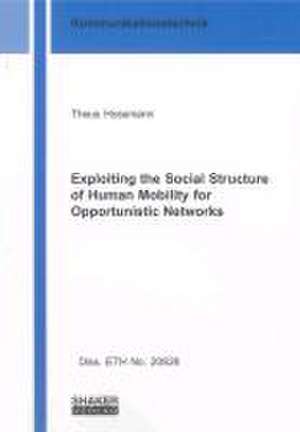Exploiting the Social Structure of Human Mobility for Opportunistic Networks
Autor Theus Hossmannen Limba Engleză Paperback – 17 ian 2013
Preț: 238.20 lei
Preț vechi: 297.75 lei
-20% Nou
Puncte Express: 357
Preț estimativ în valută:
45.58€ • 47.02$ • 38.04£
45.58€ • 47.02$ • 38.04£
Carte indisponibilă temporar
Doresc să fiu notificat când acest titlu va fi disponibil:
Se trimite...
Preluare comenzi: 021 569.72.76
Specificații
ISBN-13: 9783844015980
ISBN-10: 3844015981
Pagini: 185
Ilustrații: 25 farbige Abbildungen
Dimensiuni: 149 x 212 x 19 mm
Greutate: 0.26 kg
Editura: Shaker Verlag
ISBN-10: 3844015981
Pagini: 185
Ilustrații: 25 farbige Abbildungen
Dimensiuni: 149 x 212 x 19 mm
Greutate: 0.26 kg
Editura: Shaker Verlag
